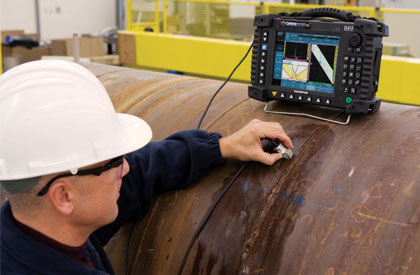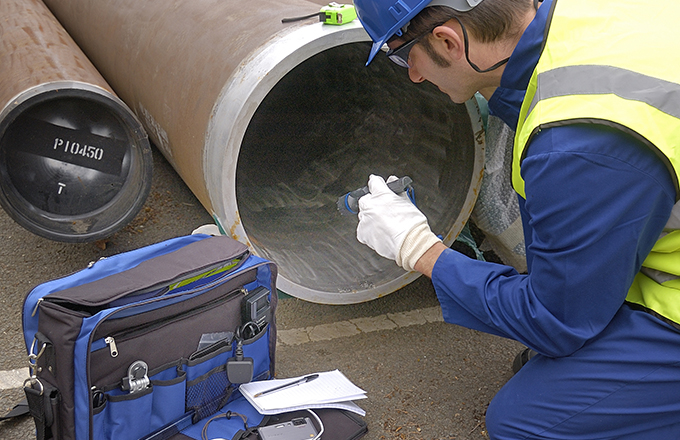How Welding Assessment Functions: An In-Depth Evaluation of Approaches, Criteria, and the Function of Assessors in Making Certain Architectural Stability and Security
Welding examination is a necessary component in the construction and manufacturing industries, where the stability of bonded joints is vital to security and reliability. Examiners are tasked with not only reviewing weld quality versus stringent requirements but likewise interpreting complicated codes and standards.
Relevance of Welding Inspection
Welding assessment is critical in making certain the integrity and safety of bonded frameworks, with studies indicating that approximately 70% of structural failures can be traced back to insufficient welding methods. This highlights the importance of methodical inspection processes throughout the welding lifecycle, from preparation to completion. Effective assessment not just identifies issues prior to they rise into significant issues but likewise makes sure conformity with sector requirements and laws.

The role of welding assessors extends past mere quality assurance; they are important in protecting public safety and security and lessening responsibility for organizations. By implementing strenuous assessment protocols, business can discover problems such as incomplete blend, fractures, or extreme porosity, which can jeopardize the general toughness of a welded joint. Continuous training and qualification of inspectors contribute to the total high quality guarantee in welding procedures, cultivating a culture of safety and security and excellence.
In enhancement, welding assessment plays a crucial duty in preserving operational effectiveness. Determining problems early in the process promotes prompt corrective actions, reducing costly rework and project delays. Inevitably, a robust evaluation structure acts as a foundation for sturdy and trusted bonded frameworks, guaranteeing they fulfill both functional and safety demands.
Typical Assessment Methods
Exactly how can one make certain the quality of welded joints throughout the assessment process? The application of different assessment techniques is vital in examining weld integrity and identifying potential defects. Common approaches consist of Visual Evaluation (VT), which is usually the first line of protection, permitting assessors to find surface flaws such as fractures, porosity, or incomplete combination by aesthetically evaluating the welds.
Ultrasonic Checking (UT) is one more extensively used strategy, utilizing high-frequency acoustic waves to identify inner defects within the weld. This method is particularly efficient for discovering issues that are not noticeable to the naked eye. Radiographic Checking (RT) utilizes X-rays or gamma rays to produce pictures of the weld, making it possible for the recognition of volumetric issues, such as gaps or additions.
Magnetic Particle Evaluating (MT) and Liquid Penetrant Checking (PT) are likewise famous methods, concentrating on surface problems. MT depends on magnetic areas to expose surface and near-surface discontinuities, while PT entails applying a fluid dye to highlight problems. Each of these techniques serves a distinctive function, ensuring the comprehensive evaluation of bonded joints and safeguarding architectural integrity and security.
Criteria for Examining Welds
The examination of welds is directed by a collection of well-known requirements that guarantee both capability and security in welded structures. These criteria include various elements, consisting of weld size, account, and penetration, which should satisfy specified requirements. Conformity with sector codes, such as those set by the American Welding Society (AWS) or the American Society of Mechanical Designers (ASME), is vital in determining the acceptability of a weld.

Weld metallurgy plays an essential duty; the analysis considers the combination quality between base and filler materials, as well as heat-affected zones. Ultimately, the overall mechanical homes, consisting of tensile strength and ductility, should satisfy the demands developed for the details application. Collectively, these criteria make sure that welds not only meet aesthetic standards but also do dependably under functional problems.
Function of Welding Inspectors
A welding examiner's know-how is crucial in guaranteeing the stability and top quality of welded structures. These professionals play a crucial role in the manufacture and construction process by confirming that welding operations stick to developed specifications and requirements. Their duties encompass a comprehensive range of jobs, including visual evaluation of welds, evaluating welding paperwork, and carrying out non-destructive testing (NDT) methods such as ultrasonic or radiographic testing to identify problems.
Welding assessors are additionally in charge of analyzing welding codes and requirements, guaranteeing that the welders are certified and that the materials utilized meet the needed needs - Houston Welding Inspection. They have to maintain meticulous records of inspections, which work as paperwork of conformity and quality control. Additionally, these examiners usually team up with designers and job managers to address click here for more any type of problems that emerge during the welding procedure, supplying referrals for corrective actions when necessary.
In enhancement to technical abilities, reliable communication is crucial, as welding inspectors need to share findings clearly to stakeholders and promote training and guidance for welders. Eventually, their duty is essential to keeping safety and dependability in bonded frameworks, adding significantly to the general success of building and construction projects.

Difficulties in Welding Examination
What obstacles do welding examiners encounter in their vital duty? The intricacies of modern welding techniques and materials present considerable obstacles for assessors tasked with guaranteeing conformity with safety and security criteria and architectural integrity. One primary obstacle is the fast improvement of welding technology; examiners need to continuously upgrade their expertise and abilities to continue to be effective. This continuous education and learning is necessary to comprehending new materials and processes, which can vary extensively in qualities and demands.
Additionally, assessors typically run into variants in worksite conditions that can prevent examination processes. Aspects such as environmental problems, ease of access, and the physical state of the welded frameworks can complicate complete assessments. Time restraints enforced by job schedules can even more pressure assessors, possibly impacting the thoroughness of their evaluations.
Furthermore, the subjective nature of some evaluation methods can lead to inconsistencies in evaluations. Visual examinations might differ based on the examiner's experience and viewpoint. To alleviate these challenges, the fostering of innovative non-destructive screening techniques and standard protocols comes to be important - Houston Welding Inspection. Ultimately, getting rid of these challenges is vital for making certain the security and integrity of welded frameworks across different sectors.
Verdict
Welding assessment is crucial for preserving structural honesty and safety and security in different sectors. Via the application of varied evaluation techniques and adherence to well-known criteria, inspectors play a critical duty in guaranteeing and determining flaws compliance with market standards. The difficulties dealt with in this area highlight the need for continuous improvement in evaluation techniques and techniques. Ultimately, reliable welding evaluation adds dramatically to mitigating threats and boosting the overall dependability of welded structures.
Welding examination is an essential part in the construction and production industries, where the honesty of welded joints is extremely important to security and dependability.Welding assessment is vital in guaranteeing the honesty and security of bonded frameworks, with studies showing that up to 70% of architectural failings can be traced back to insufficient welding practices. Their duties include a thorough array of jobs, page consisting of visual evaluation of welds, evaluating welding documents, and performing non-destructive screening (NDT) methods such as ultrasonic or radiographic screening to identify flaws.
Welding assessors are find out this here likewise accountable for interpreting welding codes and standards, ensuring that the welders are certified and that the materials utilized satisfy the required requirements. Eventually, effective welding examination contributes substantially to mitigating risks and enhancing the total dependability of bonded structures.